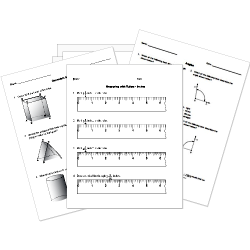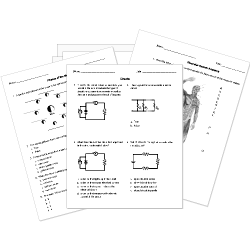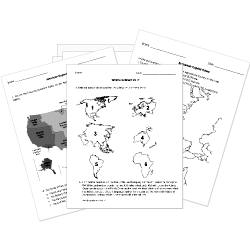Arrangement of Elements in Periodic Table
Arrangement of Elements in Periodic Table
This lesson aligns with NGSS PS1.A
Introduction
Scientists have arranged the elements into a table, categorizing them according to their properties. This table is known as the Periodic Table. The periodic table is a tabular representation of chemical elements, organized based on their respective atomic numbers. Within this table, the vertical columns are referred to as 'groups,' while the horizontal rows are designated as 'periods.
Dmitri Mendeleev, a Russian scientist, is credited as the creator of the Periodic Table. Mendeleev based his arrangement of elements by considering both ascending atomic mass and similar properties. In this article, we will learn about how elements are arranged in groups and periods in a periodic table.
Historical Perspective
Mendeleev's original periodic table had a remarkable ability to predict the properties of undiscovered elements. Mendeleev Organized his periodic table on the basis of increasing atomic mass. He left gaps for elements yet to be discovered and accurately predicted their properties.
Modern Periodic Table
Modern periodic table, however, is organized by increasing atomic number rather than atomic mass. The atomic number is the number of protons in an atom, and it uniquely identifies each element. The periodic table is divided into groups and periods. Groups, also known as families, are vertical columns, while periods are horizontal rows.
- Elements in the same group share the same valence electron configurations, leading to similar chemical properties.
- In contrast, elements in the same period have increasing order of valence electrons. Consequently, as the energy level increases, the count of energy sub-levels per energy level also increases.
The initial 94 elements featured in the periodic table occur naturally, while those from 95 to 118 have exclusively been artificially synthesized in laboratories or nuclear reactors. The modern periodic table, currently in use, is a new and improved version compared to certain models proposed by scientists during the 19th and 20th centuries.

Fig.1: Modern Periodic Table
Groups: The Vertical Columns
The vertical columns in the periodic table are the groups, numbered from 1 to 18. Elements within the same group share similar chemical properties because they have the same number of valence electrons, which are the electrons in the outermost energy level. Valence electrons play a pivotal role in an element's chemical behavior, influencing its ability to form bonds with other elements.
Group 1: for instance, consists of alkali metals, which are highly reactive metals that readily lose one electron to achieve a stable electron configuration. As we move down the group, the reactivity increases due to the addition of energy levels.
Group 18: on the other hand, comprises the noble gases, which are characterized by their inert nature. They have a full shell of valence electrons, making them stable and unreactive.
Periods: The Horizontal Rows
The horizontal rows in the periodic table are the periods, numbered from 1 to 7. Elements within the same period do not necessarily share similar properties, but there are observable trends in atomic size and other characteristics.
- The periodic table comprises seven periods, arranged numerically from 1 to 7 in a top-to-bottom sequence. The 1st period consists of only two elements, namely Hydrogen and Helium, while the 2nd and 3rd periods include 8 elements each.
- Moving forward, the 4th and 5th periods consist of 18 elements each. In contrast, the 6th period is characterized by the presence of 32 elements.
- The 7th period, the latest addition to the periodic table, introduces four new elements: 113-Nihonium, 115-Moscovium, 117-Tennessine, and 118-Oganesson. This inclusion completes the 7th period with a total of 32 elements.
- Additionally, the extended form of the periodic table at the bottom, featuring 14 elements from the 6th period known as lanthanoids and another 14 elements from the 7th period referred to as actinoids.
- Each period in the periodic table signifies the number of shells or energy levels present in an atom of a given element.
Atomic Size:
Moving from left to right across a period, atomic size generally decreases. This is because electrons are added to the same energy level, resulting in a stronger attractive force between the positively charged nucleus and the negatively charged electrons. Consequently, the outermost electrons are pulled closer to the nucleus, reducing the atomic size.
Metals and Non-metals
:Additionally, within a period, there is a transition from metals to nonmetals. Metals are found on the left side of the periodic table and tend to lose electrons easily, while nonmetals are located on the right side and have a greater tendency to gain electrons. This division is a key feature of the periodic table, showing a clear difference in the chemical behavior of elements based on their positions.
Summary
- Dimitri Mendeleev Organized his periodic table on the basis of increasing atomic mass.
- Modern periodic table, however, is organized by increasing atomic number rather than atomic mass.
- The vertical columns in the periodic table are the groups, numbered from 1 to 18.
- Elements within the same group share similar chemical properties because they have the same number of valence electrons.
- The horizontal rows in the periodic table are the periods, numbered from 1 to 7.
- Elements within the same period do not necessarily share similar properties, but there are observable trends in atomic size and other characteristics.
Related Worksheets:













